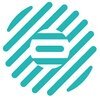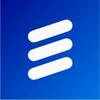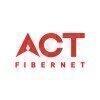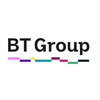Filter interviews by
Wish Net Interview Questions and Answers
10 Interview questions
Token passing is a network protocol for managing access to a shared communication medium.
In token passing, a 'token' circulates in the network, granting permission to transmit data.
Only the device holding the token can send data, preventing collisions.
Examples include Token Ring and Fiber Distributed Data Interface (FDDI) networks.
If a device does not need to send data, it passes the token to the next device.
The OSI model is a conceptual framework used to understand network communication in seven layers.
Layer 1: Physical - Deals with the physical connection (e.g., cables, switches).
Layer 2: Data Link - Manages node-to-node data transfer (e.g., Ethernet).
Layer 3: Network - Handles routing of data (e.g., IP addresses).
Layer 4: Transport - Ensures complete data transfer (e.g., TCP, UDP).
Layer 5: Session - Manages session...
A network is a collection of devices; networking is the process of connecting and managing those devices.
A network refers to the actual infrastructure, like routers and switches.
Networking involves the protocols and processes that allow devices to communicate.
Example of a network: A local area network (LAN) in an office.
Example of networking: Configuring IP addresses and managing data flow.
Optical Time Domain Reflectometer
OTDR stands for Optical Time Domain Reflectometer
It is a device used to test the integrity of fiber optic cables
OTDR sends a pulse of light down the fiber and measures the reflections to determine the quality of the cable
It is commonly used in network field engineering for troubleshooting and maintenance
Yes, I can start tomorrow if offered 10,000, as I am ready and eager to contribute immediately.
I have the necessary skills and experience for the role.
I am available to start immediately without any prior commitments.
I am motivated by the opportunity and financial incentive.
I can quickly adapt to the work environment and team.
Yes, I can configure a home router by accessing its settings through a web interface and adjusting various parameters.
Connect your computer to the router via Ethernet or Wi-Fi.
Open a web browser and enter the router's IP address (commonly 192.168.1.1 or 192.168.0.1).
Log in using the default credentials (often found on the router or in the manual).
Change the SSID (network name) and password for Wi-Fi security.
Confi...
The colour code of twisted pair cables is used to identify the different pairs of wires within the cable.
The most common colour code for twisted pair cables is the TIA/EIA 568 standard, which uses the following colours: white/blue, blue, white/orange, orange, white/green, green, white/brown, brown.
The colour code helps technicians easily identify and match the correct pairs of wires when terminating the cable.
Usin...
Virtual memory is a memory management technique that allows a computer to compensate for physical memory shortages by temporarily transferring data from RAM to disk storage.
Virtual memory allows a computer to run programs that require more memory than physically available
It creates an illusion of a larger memory space by using disk space as an extension of RAM
Data is swapped between RAM and disk storage based on u...
L2 devices operate at the data link layer and L3 devices operate at the network layer.
L2 devices include switches, bridges, and VLANs.
L3 devices include routers, layer 3 switches, and firewalls.
L2 devices forward frames based on MAC addresses.
L3 devices forward packets based on IP addresses and use routing protocols.
L2 devices are used to segment networks and reduce collisions.
L3 devices are used to connect differ...
SFP stands for Small Form-factor Pluggable, a compact transceiver used in networking devices. Losses in optical fiber refer to the reduction in signal strength as light travels through the fiber.
SFP is a hot-swappable transceiver used in networking equipment to transmit and receive data over optical fiber or copper cables.
Losses in optical fiber can occur due to factors like bending, splicing, and impurities in th...
Wish Net Interview Experiences
9 interviews found
I applied via Walk-in and was interviewed in Nov 2024. There was 1 interview round.
(2 Questions)
- Q1. What is sfp and losses in optical fiber
- Ans.
SFP stands for Small Form-factor Pluggable, a compact transceiver used in networking devices. Losses in optical fiber refer to the reduction in signal strength as light travels through the fiber.
SFP is a hot-swappable transceiver used in networking equipment to transmit and receive data over optical fiber or copper cables.
Losses in optical fiber can occur due to factors like bending, splicing, and impurities in the fib...
- Q2. Full form of otdr
- Ans.
Optical Time Domain Reflectometer
OTDR stands for Optical Time Domain Reflectometer
It is a device used to test the integrity of fiber optic cables
OTDR sends a pulse of light down the fiber and measures the reflections to determine the quality of the cable
It is commonly used in network field engineering for troubleshooting and maintenance
- Q1. What is a token passing scream
- Ans.
Token passing is a network protocol for managing access to a shared communication medium.
In token passing, a 'token' circulates in the network, granting permission to transmit data.
Only the device holding the token can send data, preventing collisions.
Examples include Token Ring and Fiber Distributed Data Interface (FDDI) networks.
If a device does not need to send data, it passes the token to the next device.
- Q2. Different between network and networking
- Ans.
A network is a collection of devices; networking is the process of connecting and managing those devices.
A network refers to the actual infrastructure, like routers and switches.
Networking involves the protocols and processes that allow devices to communicate.
Example of a network: A local area network (LAN) in an office.
Example of networking: Configuring IP addresses and managing data flow.
- Q3. What is a OSI model
- Ans.
The OSI model is a conceptual framework used to understand network communication in seven layers.
Layer 1: Physical - Deals with the physical connection (e.g., cables, switches).
Layer 2: Data Link - Manages node-to-node data transfer (e.g., Ethernet).
Layer 3: Network - Handles routing of data (e.g., IP addresses).
Layer 4: Transport - Ensures complete data transfer (e.g., TCP, UDP).
Layer 5: Session - Manages sessions bet...
I applied via Indeed and was interviewed in May 2024. There was 1 interview round.
(3 Questions)
- Q1. Tell me about yourself.
- Q2. Do you know how to configure home router?
- Ans.
Yes, I can configure a home router by accessing its settings through a web interface and adjusting various parameters.
Connect your computer to the router via Ethernet or Wi-Fi.
Open a web browser and enter the router's IP address (commonly 192.168.1.1 or 192.168.0.1).
Log in using the default credentials (often found on the router or in the manual).
Change the SSID (network name) and password for Wi-Fi security.
Configure ...
- Q3. You will get 10k, can you join from tomorrow?
- Ans.
Yes, I can start tomorrow if offered 10,000, as I am ready and eager to contribute immediately.
I have the necessary skills and experience for the role.
I am available to start immediately without any prior commitments.
I am motivated by the opportunity and financial incentive.
I can quickly adapt to the work environment and team.
Interview Preparation Tips
- Non It
Skills evaluated in this interview
(1 Question)
- Q1. What is Colour code of twisted pair?
- Ans.
The colour code of twisted pair cables is used to identify the different pairs of wires within the cable.
The most common colour code for twisted pair cables is the TIA/EIA 568 standard, which uses the following colours: white/blue, blue, white/orange, orange, white/green, green, white/brown, brown.
The colour code helps technicians easily identify and match the correct pairs of wires when terminating the cable.
Using the...
Interview Preparation Tips
Skills evaluated in this interview
(1 Question)
- Q1. What is virtual memory
- Ans.
Virtual memory is a memory management technique that allows a computer to compensate for physical memory shortages by temporarily transferring data from RAM to disk storage.
Virtual memory allows a computer to run programs that require more memory than physically available
It creates an illusion of a larger memory space by using disk space as an extension of RAM
Data is swapped between RAM and disk storage based on usage ...
Skills evaluated in this interview
I applied via Walk-in and was interviewed in May 2022. There were 3 interview rounds.

(2 Questions)
- Q1. Tell me about your self ?
- Q2. Why should we hire you ?
(1 Question)
- Q1. Give example of L2 & L3 device?
- Ans.
L2 devices operate at the data link layer and L3 devices operate at the network layer.
L2 devices include switches, bridges, and VLANs.
L3 devices include routers, layer 3 switches, and firewalls.
L2 devices forward frames based on MAC addresses.
L3 devices forward packets based on IP addresses and use routing protocols.
L2 devices are used to segment networks and reduce collisions.
L3 devices are used to connect different n...
Interview Preparation Tips
Scope. There are benefits of work learning. company doing work on latest technology.
Skills evaluated in this interview
(1 Question)
- Q1. Introduction yourself?
(1 Question)
- Q1. What is your qualifications? And some technical questions about networking!
Interview Preparation Tips
Interview Preparation Tips
I applied via Referral and was interviewed before Mar 2021. There were 3 interview rounds.

(1 Question)
- Q1. IP subnetting, switching and routing , firewall, outlook, networking devices ,L2 device configuration, router configuration
(5 Questions)
- Q1. What are your salary expectations?
- Q2. What is your family background?
- Q3. Share details of your previous job.
- Q4. What are your strengths and weaknesses?
- Q5. Tell me about yourself.
Interview Preparation Tips
- Computer Networking
Top trending discussions






Interview questions from similar companies

I applied via Referral and was interviewed before Apr 2021. There were 2 interview rounds.
(3 Questions)
- Q1. Why are you looking for a change?
- Q2. What are your salary expectations?
- Q3. Tell me about yourself.

Interview Preparation Tips
Wish Net Interview FAQs
Tell us how to improve this page.
Wish Net Interviews By Designations
- Wish Net Technical Support Engineer Interview Questions
- Wish Net Network Field Engineer Interview Questions
- Wish Net Technical Support Executive Interview Questions
- Wish Net Network Engineer L1 L2 Interview Questions
- Wish Net IT Hardware and Networking Engineer Interview Questions
- Wish Net Desktop Support Engineer Interview Questions
- Wish Net Service Engineer Interview Questions
Interview Questions for Popular Designations
Overall Interview Experience Rating
based on 5 interview experiences
Difficulty level
Duration
Interview Questions from Similar Companies
Wish Net Reviews and Ratings
based on 62 reviews
Rating in categories
|
Technical Support Engineer
45
salaries
| ₹0.9 L/yr - ₹2 L/yr |
|
Network Engineer
14
salaries
| ₹0.8 L/yr - ₹2 L/yr |
|
Technical Support Executive
9
salaries
| ₹1.2 L/yr - ₹1.6 L/yr |
|
Network Support Engineer
6
salaries
| ₹1 L/yr - ₹2 L/yr |
|
Technical Support Associate
5
salaries
| ₹0.9 L/yr - ₹1.5 L/yr |

Ericsson

Nokia

ACT Fibernet

BT Group
- Home >
- Interviews >
- Wish Net Interview Questions












